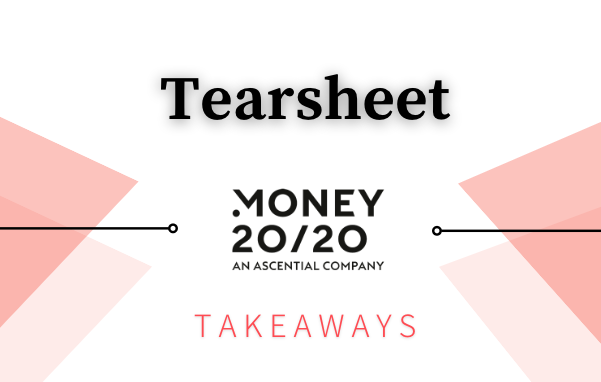Events, Finance Everywhere
Tearsheet’s Money20/20 takeaways
- Tearsheet is back from this year's Money2020, the biggest finance/fintech event of the year. There was an excitement to be back in the world, meeting new people and making deals.
- However, the joy was mitigated by a reined-in exuberance and fear about what’s happening at the macro level outside the conference. Here are Tearsheet's main takeaways.








